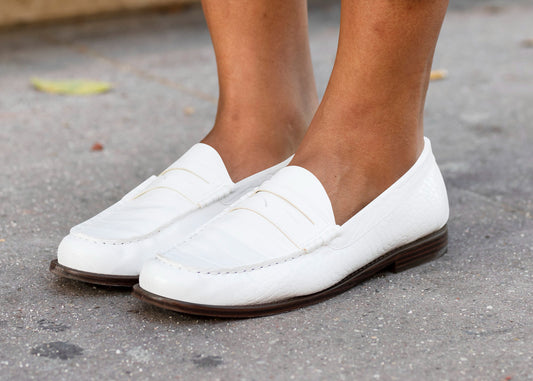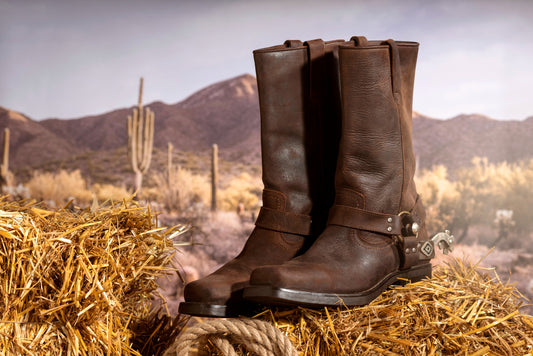How Long Do Shoes Take to Dry - Dry Shoes Quickly and Effectively

24-48 hours is the standard time frame for shoes to dry, but there are several factors that can affect the actual drying time. The type of material of the shoe, the level of humidity in the environment, and how wet the shoes were to begin with all play a role in how long it takes for them to fully dry.
If you want to dry your shoes quickly and not cause any damage, you may want to read the rest of this guide.
Factors Affecting Drying Time for Shoes

Material
The first factor influencing the drying time of footwear is the shoe material. Leather shoes, for example, are quite durable but require more time to dry out properly in order to retain their shape and texture.
On the other hand, running shoes with a mesh upper generally have better breathability, which allows them to dry faster.
For sturdy shoes or boots made with thick materials, you can expect a considerably longer drying period due to their denser composition and often additional waterproofing layers.
- Leather Shoes: 24-48 hours
- Running Shoes with Mesh Upper: 12-24 hours
- Thick-soled Boots (e.g., Work or Hiking Boots): 48-72 hours
- Canvas Shoes: 24 hours
- Synthetic Materials: Less than 24 hours
Read related article: Footwear Safety Tips: Useful Tips to Remember
Level of Humidity in the Environment
The level of humidity in the environment also plays a significant role in how long your shoes take to dry. In areas with high humidity, such as tropical or coastal regions, drying times can be extended due to the excess moisture in the air.
To speed up the drying process, you can place your shoes in a well-ventilated area or use a dehumidifier to reduce the moisture in the air. This will help prevent mold and mildew from forming on your shoes while they dry.
Read related article: How to Dry Shoes Fast - Easy-to-Follow Guide
Initial Wetness of Shoes
The wetter your shoes are when you begin drying them, the longer it will take for them to fully dry.
To speed up the process, you can remove excess water from your shoes by gently squeezing them or using a towel to absorb as much moisture as possible before leaving them out to dry.
It's also important to note that how wet your shoes are will depend on the activity you are doing while wearing them. Shoes worn for a light walk in the rain will likely not need as much time to dry compared to shoes worn for a long hike through a stream.
Effective Ways to Air Dry Your Shoes
The air drying method is arguably the safest and best way to dry most types of shoes, especially those designed to dry naturally. While this will not dry the shoes quickly compared to other methods, it greatly reduces the risk of damaging the shoes during the drying process.
To effectively air dry your shoes, hang your shoes in a well-ventilated area away from direct sunlight and heat sources which can cause materials like leather to warp or crack.
For fabric shoes, it's often beneficial to put the shoes in a position where air can circulate inside and around them, allowing for even drying inside out.
Using a Shoe Dryer: Pros and Cons

Now, you might have heard someone suggest a shoe dryer as the fastest way to dry your shoes, and it's an option worth considering for certain types of materials. You can use a shoe dryer on materials such as synthetic fabrics and canvas, which tend to be more resilient.
To keep your shoes from deforming, carefully place the shoes inside the device or hang the shoes by the laces if the model allows. Using a shoe dryer can be more efficient than air-drying, especially when you're short on time.
However, it is essential to use a shoe dryer correctly to prevent damage to your footwear. Always refer to the manufacturer’s guidelines to ensure the settings are appropriate for the type of shoes you're drying.
Read related article: How to Wash Shoes in the Washing Machine
Can I Use Rice to Dry Wet Shoes?
Effectiveness of Using Rice to Dry Shoes
One way to dry your wet shoes, especially if you're in a pinch, is to use uncooked rice. This unconventional method can be particularly effective because rice is a natural desiccant that has the ability to absorb moisture. By utilizing this household item, you can expedite the drying process for your shoes and boots without needing specialized equipment.
Step-by-Step Guide for Using Rice to Dry Wet Shoes
- Stuff Your Shoes with Uncooked Rice: Begin by filling a pair of socks with uncooked rice. Tie the ends to keep the rice from spilling out.
- Place the Rice-Filled Socks Inside Your Shoes: Ensure the rice is distributed throughout the inside of the shoe, especially towards the toe area to maximize moisture absorption.
- Seal the Shoes in an Airtight Bag with More Rice: Place your shoes in a large zip-lock bag or airtight container and add more loose rice so that the outside of your shoes is also in contact with rice.
- Let Them Sit Overnight: Keep your shoes sealed with the rice for at least 24 hours for the best results. The rice should draw out the moisture from both the inside and outside.
Precautions to Take When Using Rice for Drying Shoes
- Be cautious as stuffing your shoes with uncooked rice can potentially stretch or deform them, especially if overfilled.
- Moisture can damage your shoes if they remain damp for too long, so ensure all the rice is dry to prevent mildew or mold growth.
Other Household Items for Drying Shoes
- Newspaper: Stuffing your shoes with newspaper is a classic technique that works similarly to rice, by absorbing the moisture.
- Silica Gel Packs: Often found in product packaging, these can also be placed inside shoes to help draw out dampness.
Comparison of Different Household Drying Methods
While using rice can be an effective moisture absorber, newspapers, and silica gel packs also serve as viable options for drying your shoes. Newspapers, being more absorptive, may require frequent swapping to maintain drying efficacy, while silica gel packs offer a no-mess alternative but might be less readily available.
It's crucial to clean your shoes after using any of these methods to ensure no residues are left behind that could affect the shoe's material or texture.
What to Do When Shoes Get Wet After Use

While putting shoes in the dryer is often considered an ideal method to dry shoes quickly after washing them, there are other methods to use if your shoes get wet after use that can preserve the quality of your shoes without damaging them.
To ensure shoes dry effectively without risking damage, avoid placing shoes in front of direct heat sources such as radiators or an oven, as intense heat can warp fabrics and compromise the adhesive holding shoes together.
Instead, aim to allow shoes to air dry completely after a few hours in a well-ventilated space. For those needing to dry shoes fast, it's beneficial to use methods that circulate air within the shoes and to place them in an environment where humidity is low.
Read related article: How to Waterproof Shoes - 3 Ways to Waterproof Boots and Shoes
Tips to Keep Your Shoes Dry
- Avoid Wearing Shoes in Wet Conditions: Prevention is the best cure, so try to avoid wearing shoes in wet conditions as much as possible.
- Always Have an Extra Pair of Shoes: In case your shoes get wet, it's helpful to have an extra pair of shoes on hand so you can change into dry ones if necessary.
- Dry Shoes Properly After Use: Ensure your shoes are completely dry before storing them as dampness can lead to unpleasant odors and damage over time.
We also recommend using waterproofing products to protect shoes from moisture and prolong their lifespan.
For leather shoes, Stone and Clark's Leather Spray is an excellent option to seal and protect the leather from water damage.
For fabric or canvas shoes, Stone and Clark's Repellent Spray proves to be effective in repelling water and keeping your shoes dry.
Closing Thoughts
Expect to need to dry your shoes at least a few times throughout their lifespan, especially if you live in an area with regular rainfall or participate in outdoor activities. Using the right drying method for the type of shoes you own can help maintain their quality and prolong their lifespan.
Investing in quality waterproofing products and following these tips can help keep your shoes dry and comfortable, ensuring you're always ready to take on any adventure. Remember, prevention is key, so try to avoid wearing shoes in wet conditions when possible and be prepared with extra footwear just in case.





